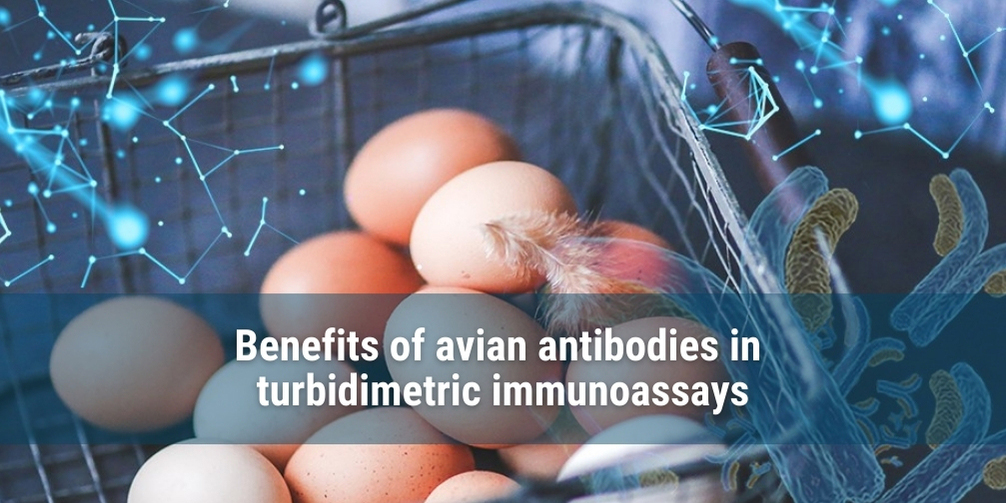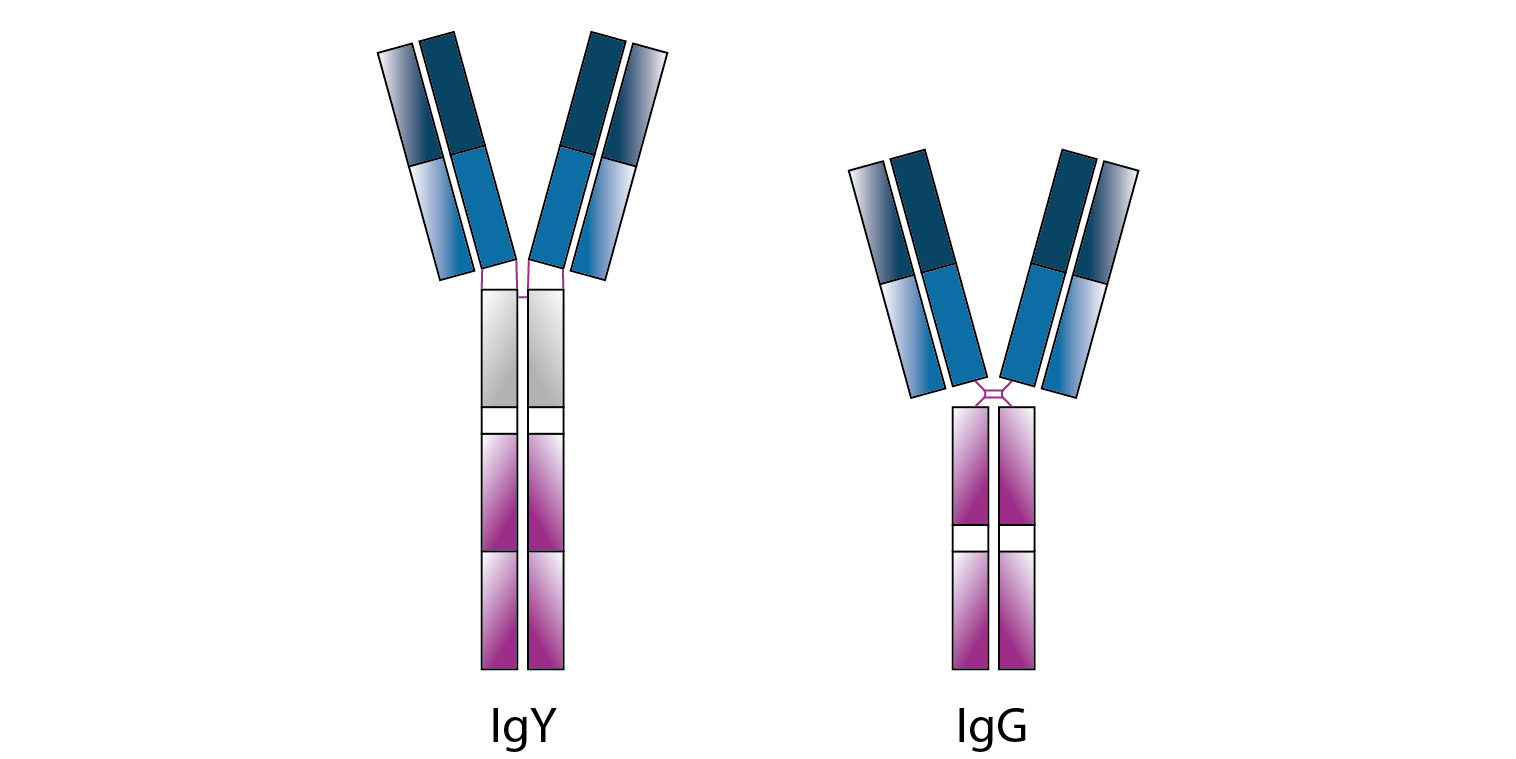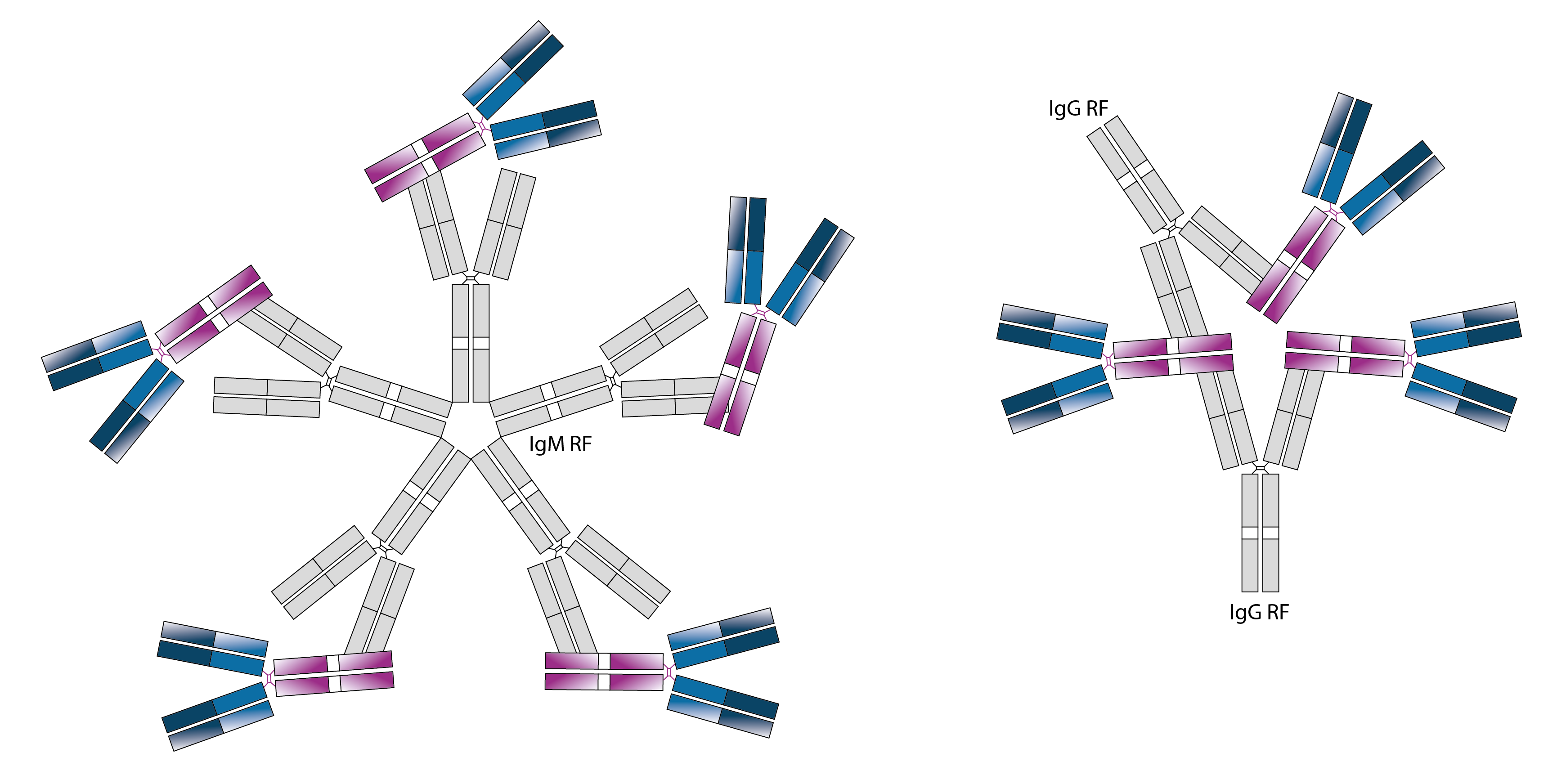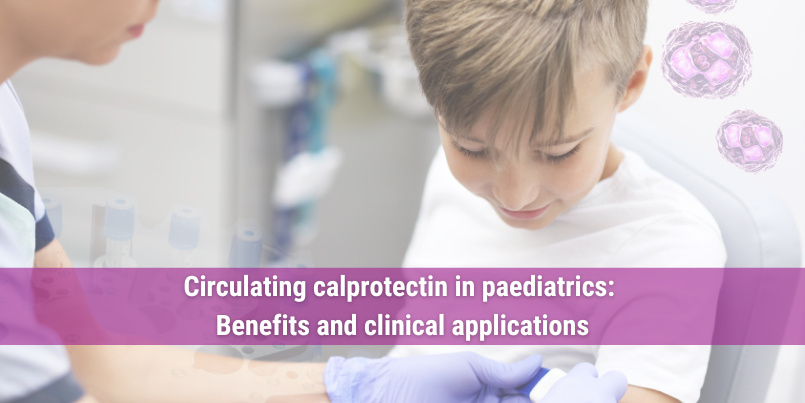
Immunoassays, like the PETIA (Particle-Enhanced Turbidimetric Immunoassay) assays developed by Gentian, are based on agglutination reactions of antibodies and target antigen. These antibodies are usually raised in mammals such as mice, rabbits, or goats, and extracted by bleeding the animal.
Gentian however has since early 2000 successfully developed immunoassays using avian antibodies purified from chicken egg yolk, as in the case of the Gentian Cystatin C, GCAL® Calprotecin and Canine CRP Immunoassay.
Producing avian antibodies
Avian antibodies are obtained by vaccinating hens with the target protein. The antibodies specific to the desired antigen produced by the hens can be conveniently extracted from the egg yolk. Benefits range from cost-effectiveness in purifying large amounts of antibodies directly from egg yolk to robust and stable assays with less interference.
Avian antibodies - IgY
IgY is the major antibody type in birds, which is the avian equivalent to mammalian IgG. Both mammalian IgG and IgY consist of two heavy chains and two light chains (Figure 1). Despite similar biological roles there are differences in immunological and physical-chemical characteristics between IgY and mammalian IgG.1

Figure 1: Illustration of avian IgY and mammalian IgG antibody
Less interference
Complement interference in immunoassays can occur when the complement system is activated by mammalian antibodies and activated complement components binds to the antibodies.2-4 Conveniently, IgY based immunoassays avoid complement interference as the human complement system is not activated by avian antibodies.2
Less false positive
There is no reaction between the avian antibodies and human anti animal antibodies (HAAA), for instance anti mouse antibodies (HAMA), or rheumatoid factor (RF).2,5,6 HAAA and RF are considered a major problem in immunoassays as they are a well-known cause of erroneous test results in tests based on mammalian antibodies.7
RF is an autoantibody which binds to the Fc (fragment crystallisable) portion of mammalian IgG thereby leading to false positive signals in immunoassays including turbidimetric assays (Figure 2).2,8,9 RF levels are increased in autoimmune diseases, especially rheumatoid arthritis, but can also be influenced by other conditions and factors, like cigarette smoking, age, cancer, chronic infections, such as viral hepatitis B and C, inflammatory lung diseases, mixed connective tissue disease, Sjogren syndrome and systemic lupus erythematosus.10

Figure 2 Rheumatoid factor interference
Binding of rheumatoid factor (RF), IgM or IgG, to the mammalian IgG antibodies in the immunoassay may inhibit the binding of the antigen.
More colloidally stable
IgY coated polystyrene particles appear to be more colloidal stable when compared with their mammalian IgG counterpart. This is important because tests using latex, may cause errors due to ‘’false positive aggregations’’. These errors happen because the conditions, like the amount of ions in the solution, can make the latex particles unstable. To prevent this, a second substance, like a surfactant or a protein (such as albumin), is added to stabilise the latex-antibody mix.
However, adding this stabiliser also reduces the effectiveness of the test due to a decrease in the number of antibody molecules on the latex particles. By using IgY more antibody molecules can be coated on the latex particles, potentially making the test more effective than using mammalian IgG antibodies.9
Animal welfare and cost-effectiveness/cost-effective
The IgY is transferred from the serum of the mother hen into the egg yolk with even higher concentration than in serum itself.2 As result significantly higher quantities can be obtained from a single chicken through the eggs (15 g during 43 weeks) compared to one rabbit (150 mg).11 Therefore, chicken eggs can be used as a non-invasive method to collect antibodies, and the European Centre for the Validation of Alternative Methods (ECVAM) specifically recommends the use of avian antibodies over mammalian antibody production.12
Avian antibodies for high performance immunoassays
In conclusion, Gentian's experience in avian antibody production allows us to create scalable antibody solutions characterised by minimal interference. The notable advantages for our immunoassays performance include the avoidance of complement interference, absence of reactions with HAMA or RF, and the effectiveness of assays involving stable particles.
Contact us
Contact us to discuss diagnostic efficiency, validation or business opportunities.
Use the form below or send us an email to marketing@gentian.com.
References:
- Warr GW et al. IgY: clues to the origins of modern antibodies. Immunol Today, 1995
- Larsson A et al. Chicken Antibodies: Taking Advantage of Evolution—A Review. Poultry Science, 1993
- Campbell RD et al. The binding of human complement component C4 to antibody-antigen aggregates. Biochem J, 1980
- Carlander D and A. Larsson. Avian antibodies can eliminate interference due to complement activation in ELISA. Ups J Med Sci, 2001
- Larsson A et al. Chicken antibodies are highly suitable for particle enhanced turbidimetric assays. Front Immunol, 2022
- Carlander D et al. Chicken antibodies: a clinical chemistry perspective. Ups J Med Sci, 1999
- Tate J and G. Ward. Interferences in immunoassay. Clin Biochem Rev, 2004
- Chambers RE et al. Overestimation of immunoglobulins in the presence of rheumatoid factor by kinetic immunonephelometry and rapid immunoturbidimetry. Ann Clin Biochem, 1987
- Dávalos-Pantoja L et al. A comparative study between the adsorption of IgY and IgG on latex particles. J Biomater Sci Polym Ed, 2000
- MayoClinic. Rheumatoid factor. Available from: https://www.mayoclinic.org/tests-procedures/rheumatoid-factor/about/pac-20384800.
- Sheng Y-J et al. Production of chicken yolk IgY to sulfamethazine: comparison with rabbit antiserum IgG. Food and Agricultural Immunology, 2015
- Schade R et al. The Production of Avian (Egg Yolk) Antibodies: IgY: The Report and Recommendations of ECVAM Workshop 211,2. Alternatives to Laboratory Animals, 1996

.jpg)
.jpg)